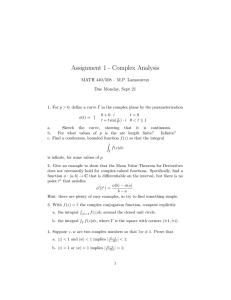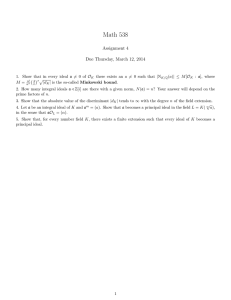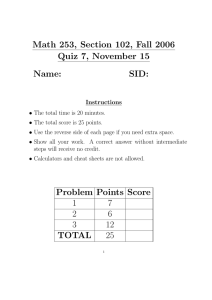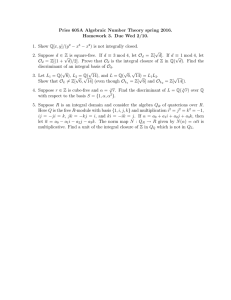MATH 101 V2A
advertisement
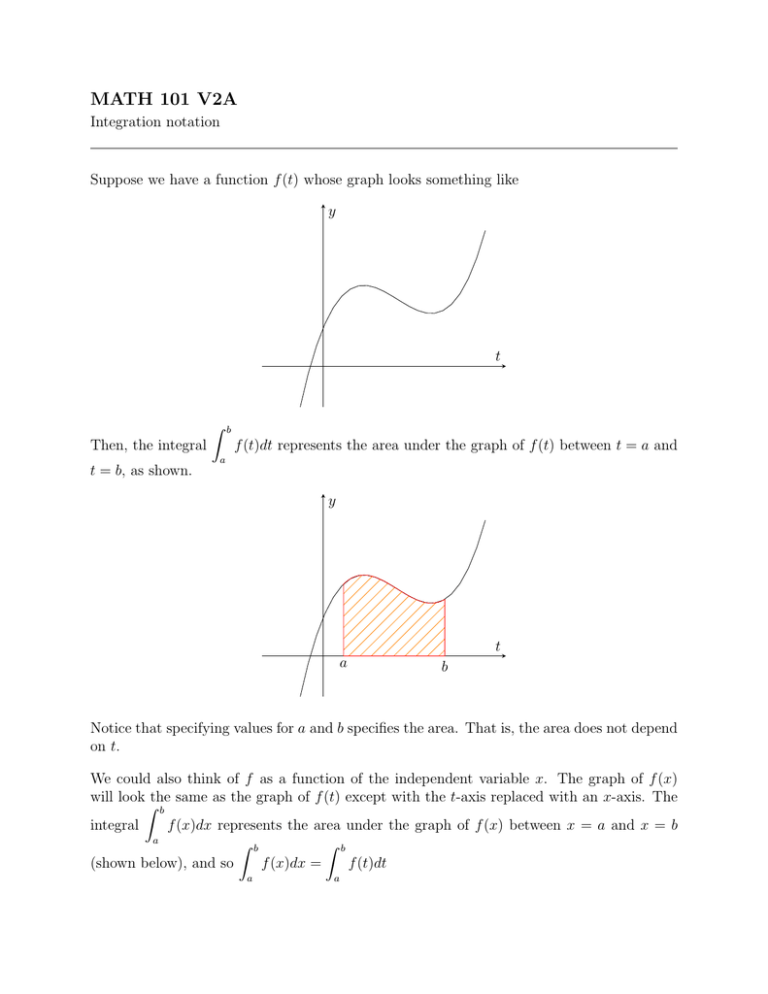
MATH 101 V2A Integration notation Suppose we have a function f (t) whose graph looks something like y t Z t = b, as shown. b f (t)dt represents the area under the graph of f (t) between t = a and Then, the integral a y t a b Notice that specifying values for a and b specifies the area. That is, the area does not depend on t. We could also think of f as a function of the independent variable x. The graph of f (x) will look the same as the graph of f (t) except with the t-axis replaced with an x-axis. The Z b integral f (x)dx represents the area under the graph of f (x) between x = a and x = b a Z b Z b (shown below), and so f (x)dx = f (t)dt a a y x a b We might also want to think of f as beingZa function of t, but the upper limit of integration x f (t)dt represents the area under the graph of as being a variable x. Then the integral a f (t) between t = a and t = x (here x represents a point on the t-axis) as shown. y t a x As you can imagine, for a fixed number a, changing the value of x results in a change in the Z area under the curve between t = a and t = x, and Z therefore a change in the integral x x f (t)dt. In this way, we get a function of x, F (x) = a f (t)dt. a Why do we need x? Why can’t Zwe define the same function except as a function of t? t Suppose we try to define G(t) = f (t)dt. What does this mean? Does G(t) represent a the area under the curve from t = a to t = t (← what does that even mean?)? Let’s try evaluating G at a specific value ofZt. The area under the integral from t = a to t = b is given Z b b by f (t)dt, so we want G(b) = f (t)dt. But plugging t = b into our formula, why don’t a a Z b Z b we get G(b) = f (b)dt or G(b) = f (b)db? The definition and meaning of G(t) are not a a clear, which is why we need to use the variable x. 2 The Fundamental Theorem of Calculus tells us that if f (t) is continuous on an interval containing a and x, then F 0 (x) = f (x). Notice that since F (x) only depends on x (not t), it’s derivative should only depend on x (not t). Notice also that a small change in x results in a smaller change in the area for those values of x for which f (x) is close to its minimum value than those values of x for which f (x) is close to its maximum value. Somehow, this indicates that the equation F 0 (x) = f (x) makes some sense. y y t a t x a 3 x


